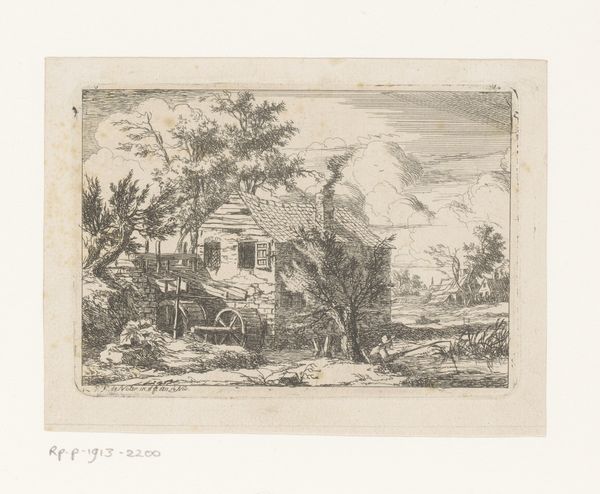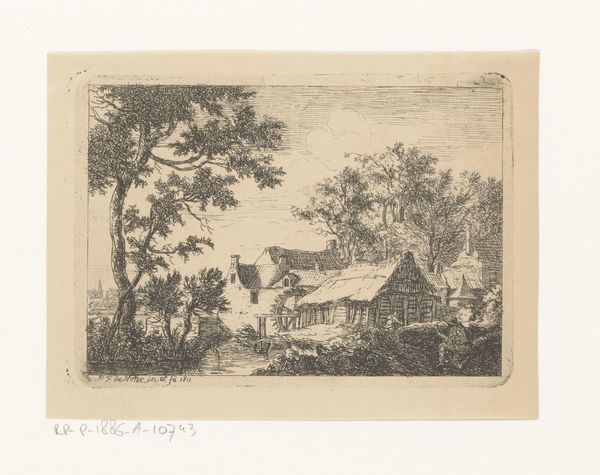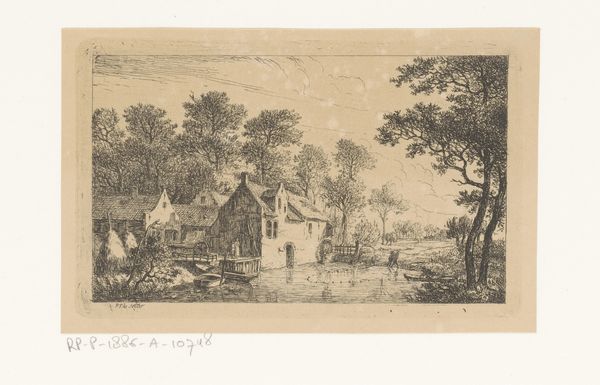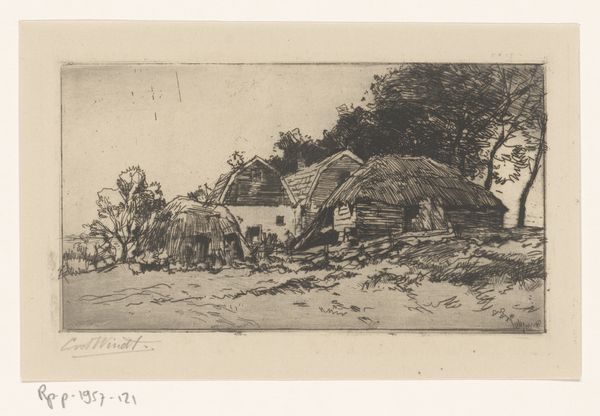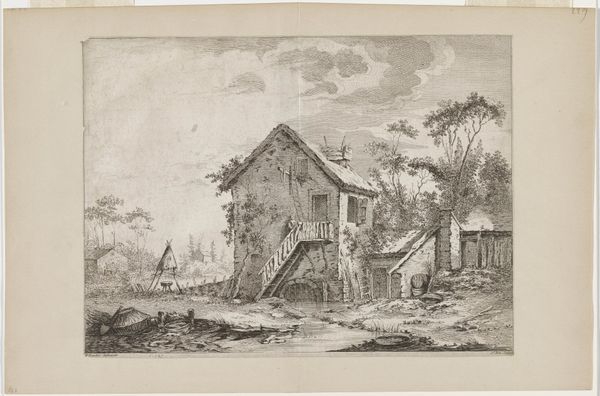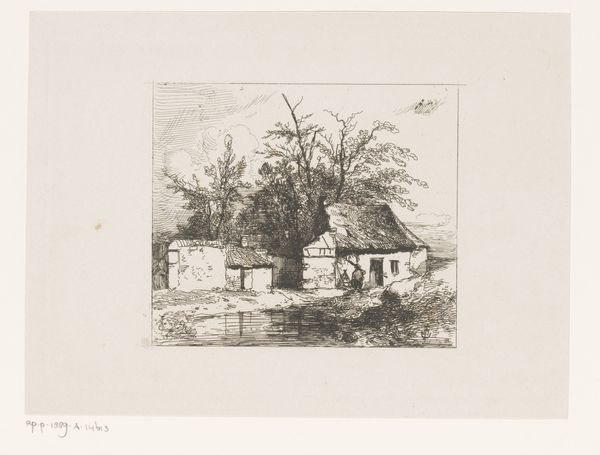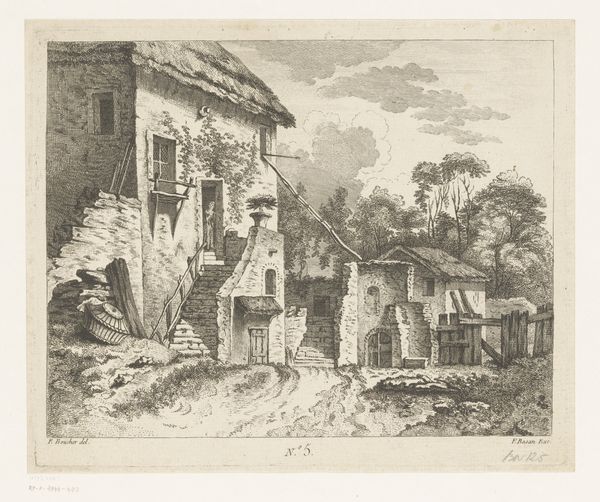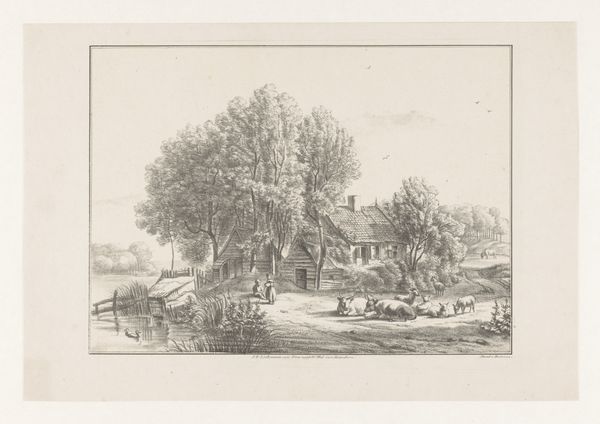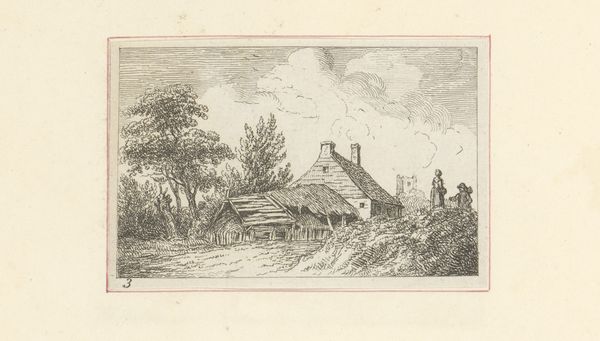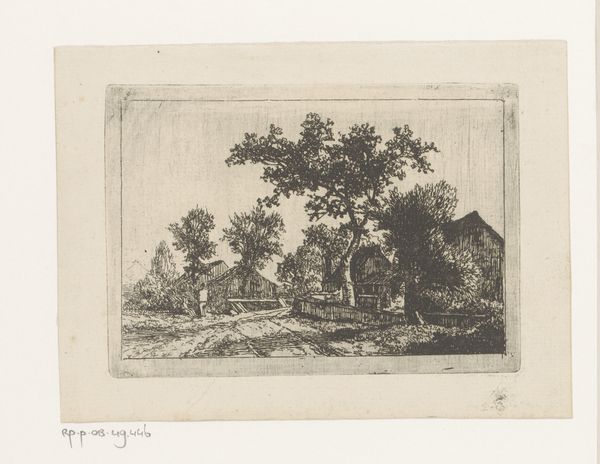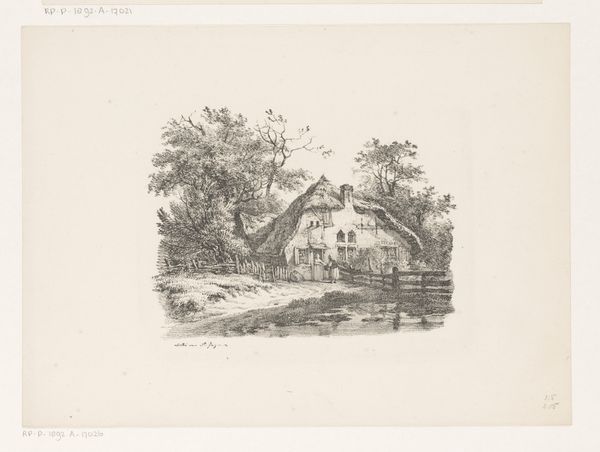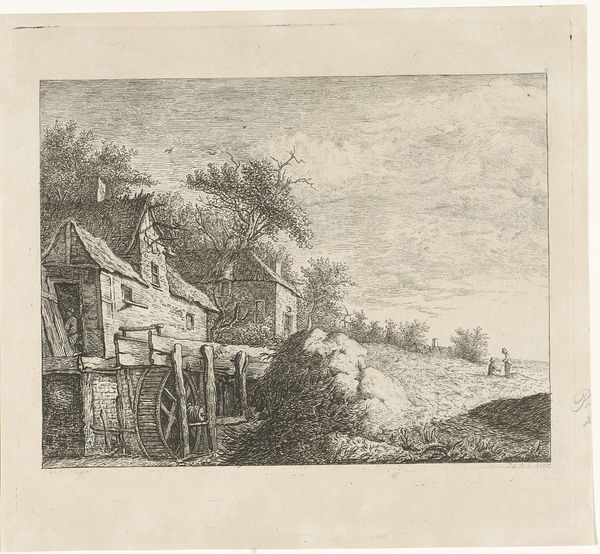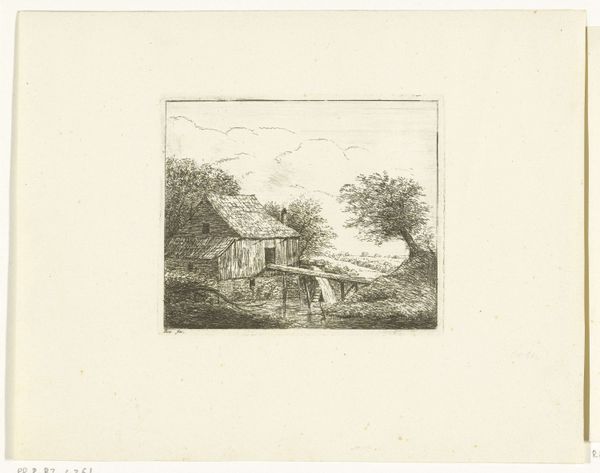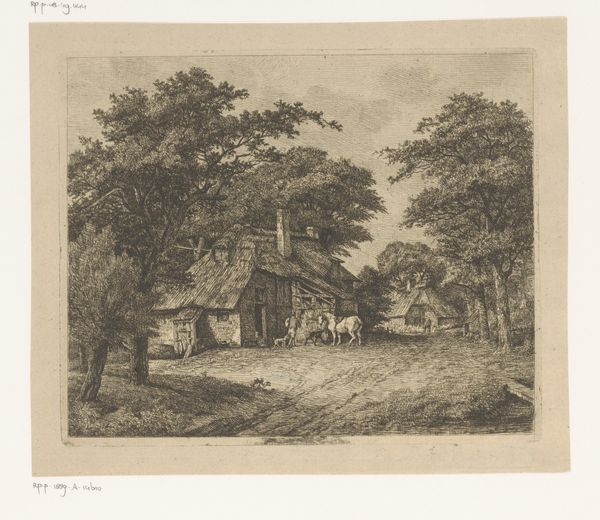
print, etching
# print
#
etching
#
landscape
#
romanticism
Dimensions: height 103 mm, width 143 mm
Copyright: Rijks Museum: Open Domain
Curator: Looking at this print, “Landscape with Watermill and a Fisherman” by Pierre François De Noter from 1811, currently held at the Rijksmuseum, I am struck by its textural intricacy. It seems deceptively simple at first glance, doesn't it? Editor: It does. My first impression is how romantic and isolated it feels, the quiet, humble existence presented. There is a very evident use of line in the sky and foreground; the work overall emits an aura of solitude, almost melancholy. Curator: Exactly. Let’s consider the technique, an etching on paper. The artist utilizes fine lines and cross-hatching to build up depth and volume. Consider the mill’s placement on the left third, how it draws the eye using structure to anchor us as we investigate form. Editor: True. And what sort of labor was involved in its production? We can examine the tools used to make it— the etching needle, the acid bath. This allows for mass production, to disseminate views of pastoral scenes and, essentially, idealize them as a form of artistic production for popular consumption. Also, observe the varying levels of expertise evidenced in De Noter’s use of materials— the artist's skill versus the workshop assistants', for instance. It prompts us to consider the print's context as commodity. Curator: Fascinating! If we move to composition, the interplay of light and shadow contributes to a sense of drama despite its intimate scale. The light appears to highlight certain compositional elements as narrative. Editor: Let's note, too, that Romanticism glorified the working class and celebrated the notion of “authenticity,” the simple, the ordinary, etc. Thus, consider how landscape etching became commodified in the industrial revolution to emphasize its difference. Curator: Point taken. Reflecting upon it now, what really captivates me is the way it encourages the viewer to meditate on the romanticization of a vanishing, agrarian lifestyle. Editor: I agree that, looked at holistically, what seems at first an innocent picture plane opens into something far more involved than simple aesthetic contemplation. Thank you.
Comments
No comments
Be the first to comment and join the conversation on the ultimate creative platform.
